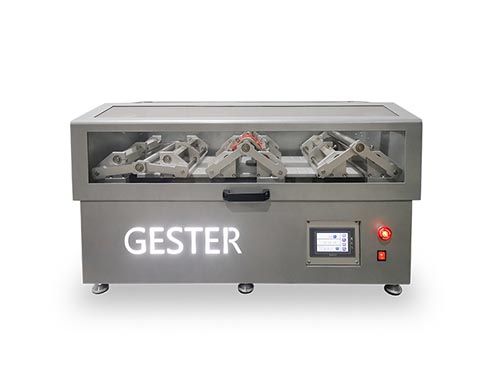
Testador de flexão de sola É usado para medir a resistência à flexão de solas de calçados sob movimento contínuo. Antes do teste, vários furos são perfurados na posição de flexão máxima e a amostra é montada entre dois dispositivos: uma braçadeira fixa e um atuador móvel. A amostra se curva com o movimento da máquina. Após um determinado número de ciclos de teste, a amostra é removida e a diferença no comprimento de corte é verificada.

Etapas do teste